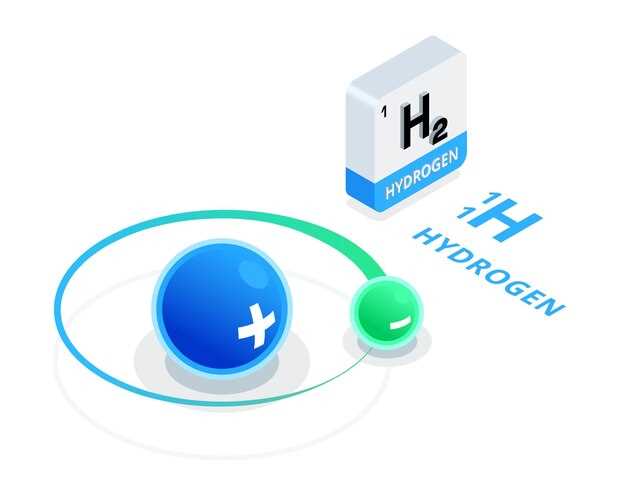
If you’re looking for comprehensive information on the BCS classification of tamsulosin hydrochloride, you’ve come to the right place. Understanding the Biopharmaceutics Classification System (BCS) classification of drugs is crucial for ensuring their efficacy and safety. Tamsulosin hydrochloride, a commonly prescribed medication for treating symptoms of an enlarged prostate, falls under Class III of the BCS classification system.
BCS Class III: Tamsulosin hydrochloride exhibits high solubility but low permeability, which means it has moderate bioavailability. This classification plays a crucial role in determining the dosage form, formulation, and therapeutic efficacy of the drug.
Whether you’re a healthcare professional, a researcher, or a student, having a sound understanding of the BCS classification of tamsulosin hydrochloride can enhance your knowledge of pharmacokinetics and drug development. Stay informed and make informed decisions with the best guide to BCS classification of tamsulosin hydrochloride.
Overview of Tamsulosin Hydrochloride Properties
Tamsulosin hydrochloride is a medication commonly used to treat symptoms of benign prostatic hyperplasia (BPH), a condition in which the prostate gland enlarges. It belongs to a class of drugs known as alpha-1 adrenergic receptor blockers, which work by relaxing the muscles in the prostate and bladder neck, making it easier for urine to pass.
Key properties of Tamsulosin Hydrochloride:

1. Selectivity: Tamsulosin hydrochloride is highly selective for the alpha-1A adrenergic receptor subtype, which is predominantly found in the prostate gland, making it more effective and with fewer side effects compared to non-selective alpha blockers.
2. Pharmacokinetics: The drug is rapidly absorbed after oral administration, reaching peak plasma concentrations within 4 to 5 hours. It is extensively metabolized in the liver and excreted primarily in the urine.
3. Dosage Forms: Tamsulosin hydrochloride is available in immediate-release and extended-release formulations, allowing for flexible dosing options to meet the needs of patients.
These properties make tamsulosin hydrochloride a crucial medication in the management of BPH, providing symptomatic relief and improving quality of life for patients.
Tamsulosin hydrochloride properties
Factors affecting Bcs classification:
1. Solubility: The solubility of tamsulosin hydrochloride in different media can affect its Bcs classification. Higher solubility can lead to a higher classification.
2. Permeability: The permeability of tamsulosin hydrochloride through biological membranes is an important factor in determining its Bcs classification.
3. Molecular weight: The molecular weight of the compound can influence its classification, with lower molecular weight compounds typically being more easily absorbed.
4. Ionization: The degree of ionization of tamsulosin hydrochloride in physiological conditions can affect its permeability and classification.
5. Stability: The stability of the compound in different conditions can also play a role in determining its Bcs classification.
Understanding the factors that affect Bcs classification is crucial for predicting the behavior of tamsulosin hydrochloride in the body and optimizing its pharmaceutical formulation for better efficacy.
Factors affecting Bcs classification
The Biopharmaceutics Classification System (BCS) categorizes drugs based on their solubility and permeability characteristics. Several factors can influence the BCS classification of a drug:
- Physicochemical properties: The drug’s molecular weight, lipophilicity, ionization, and stability in various pH conditions can affect its solubility and permeability, impacting its BCS classification.
- Formulation factors: The formulation of the drug product, including excipients, dosage form, and manufacturing processes, can influence the drug’s dissolution rate and bioavailability, which in turn may affect its BCS classification.
- Drug interactions: Co-administration of drugs that affect the absorption, distribution, metabolism, or excretion of the drug can alter its pharmacokinetic profile and potentially change its BCS classification.
- Disease state: Certain disease conditions can affect gastrointestinal motility, pH, or enzyme activity, impacting drug absorption and influencing its BCS classification.
- Food effects: Food can interact with certain drugs, affecting their absorption rate and extent. Changes in absorption may lead to alterations in the drug’s BCS classification.
Understanding the factors that influence BCS classification is important for drug development, formulation design, and regulatory submissions. By considering these factors, pharmaceutical scientists can optimize drug properties to achieve the desired BCS classification for better predictability of in vivo performance.
Importance of Bcs classification
The Biopharmaceutics Classification System (BCS) is a regulatory guideline that classifies drugs based on their solubility and permeability characteristics. This classification system is essential for determining the in vivo behavior of drugs and predicting their bioavailability.
BCS classification plays a crucial role in:
1. Supporting the development of generic drugs: BCS classification helps in establishing bioequivalence of generic drugs by comparing their in vitro dissolution profiles with the reference product.
2. Guiding formulation development: Knowing the BCS classification of a drug helps formulation scientists in selecting suitable excipients, dosage forms, and manufacturing processes to optimize drug delivery.
3. Streamlining regulatory approval: BCS classification provides a scientific basis for waiving certain bioequivalence studies, reducing the time and cost of drug development and regulatory approval.
4. Enhancing drug product performance: Understanding the BCS class of a drug allows for the design of formulations that enhance drug solubility, permeability, and overall bioavailability.
Regulatory Implications

Understanding the Biopharmaceutical Classification System (BCS) classification of tamsulosin hydrochloride is crucial for regulatory purposes. The BCS classification determines the regulatory pathway for drug approval and influences the requirements for bioequivalence testing.
Tamsulosin hydrochloride falls under BCS Class IV, which indicates low solubility and low permeability. This classification may necessitate additional studies to demonstrate bioequivalence compared to drugs in higher BCS classes.
Key Considerations:
- Regulatory agencies may require specific formulation strategies to improve the solubility and bioavailability of tamsulosin hydrochloride to meet regulatory standards.
- BCS classification also impacts the design of in vitro and in vivo studies required for regulatory approval, guiding the selection of appropriate dissolution methods and pharmacokinetic assessments.
